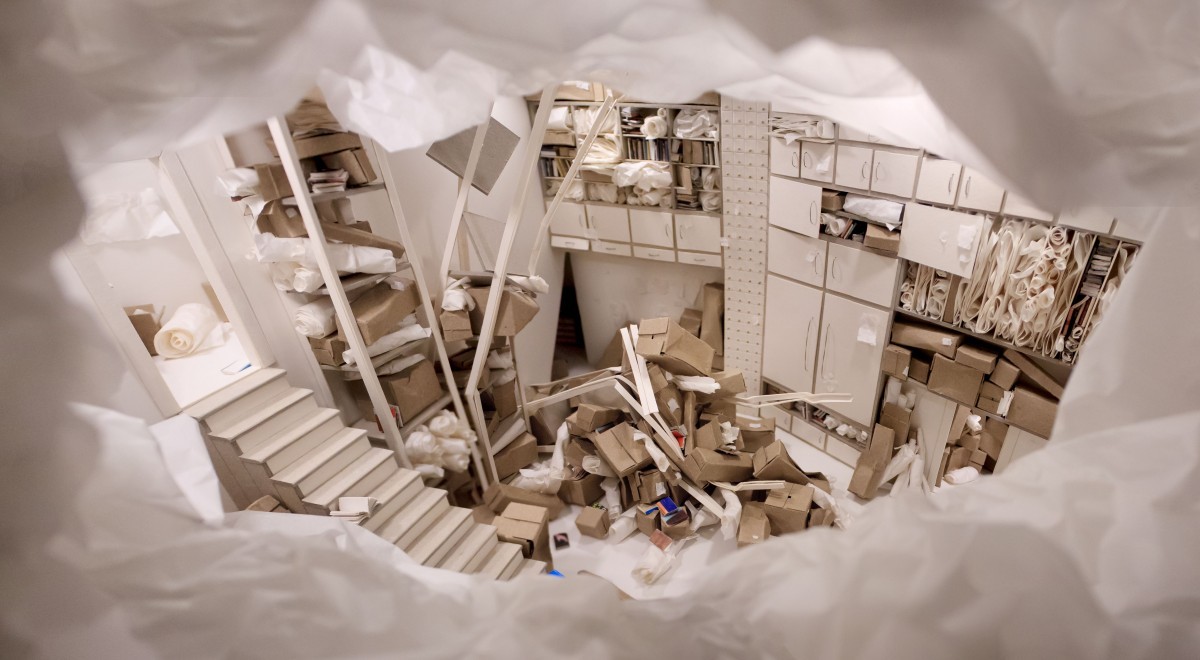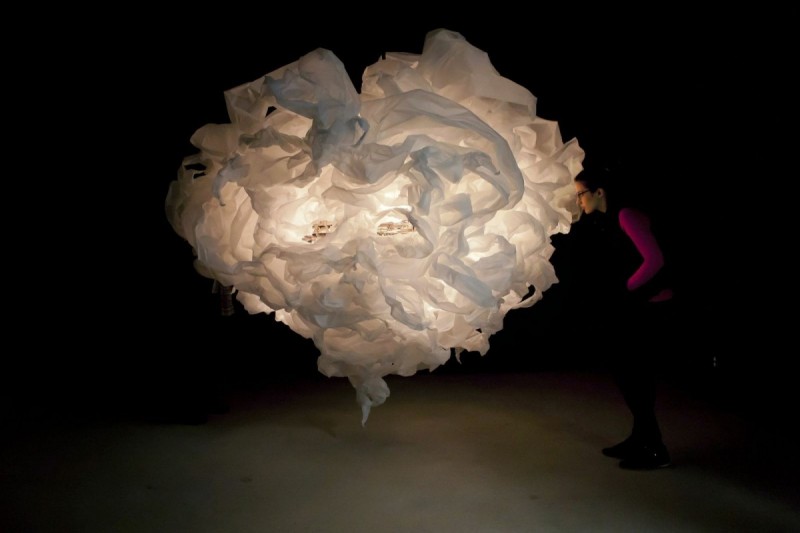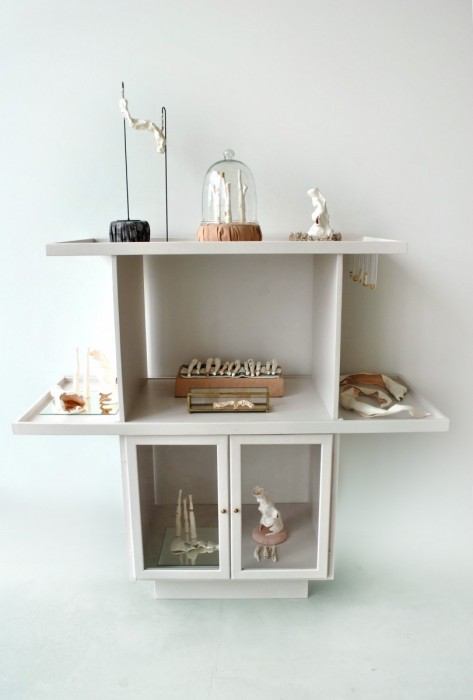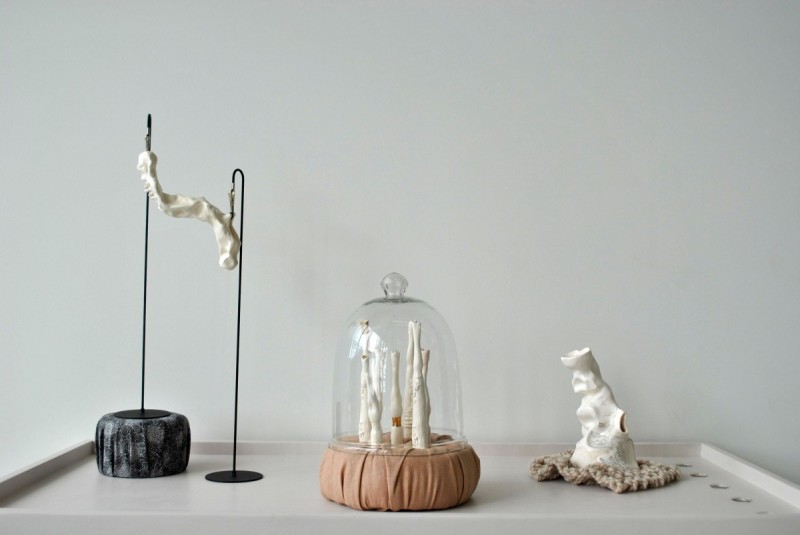
Memory and illness
School of Art graduates transform ideas into winning artworks
When Erica Dueck was six, she overheard adults saying they couldn’t remember anything about their childhood. She didn’t want that to happen to her, and so she would systematically revisit favourite memories throughout her childhood and into young adulthood; Dueck called it “memory-cleaning.”
Years later, the U of M School of Art student recreated some of her memories in her art, and now the actualization of her ideas about memory has earned her a $10,000 BMO art prize. The BMO 1st Art! Invitational Student Art Competition is an annual contest that selects top regional and national artworks by graduating students from across the country as chosen by their instructors and professors. In addition to Dueck’s national win, the regional prize worth $5,000 was taken by Hillary Smith, another School of Art graduate.
“The Ephemeral Mind,” Dueck’s mixed-media installation, was chosen as the national competition winner. After depicting specific memories in her art, the artist chose to create an installation whose point of departure was the way memory works. She says she’s fascinated by the way that “you can think something in your memory is tidy,” when “what I thought was secure has collapsed.”
Though she started her art education with an interest in graphic design, she soon moved on to photography and printmaking. During the final year of her program at the U of M, she shifted her focus to sculpture, largely because the final project she wanted to complete, she felt, needed a three-dimensional model. Dueck said that her work in her first term with School of Art’s Elizabeth Roy and Holger Kalberg helped her to formulate her ideas, while her second term working with Grace Nickel and Dominique Rey allowed her to further clarify them.
The installation that became “The Ephemeral Mind” needed a different relationship to its audience, Dueck felt. Rather than the personal memories that she had previously made into artworks, she wanted something more generic, something that others could look at to experience their own questions surrounding memory, and perhaps even reconstruct their own memories.
She also knew that the installation, comprised of constructed miniature files and cabinets, papers and piles of material to represent the artist’s conceptualization of how memory works, needed to be “a protected space.” The conviction grew stronger despite challenges from profs who thought the piece might become too complicated, or that “maybe it didn’t need to be covered.” However, Dueck stayed firm, and the challenges only strengthened her resolve. “I knew I didn’t want it to be dollhouse- or TV-like for the viewer,” she said. “It needed to be an intimate experience, something private. I also wanted to get at this idea that there’s always a separation between ourselves and what we know about ourselves. I wanted people looking into the piece to feel some frustration or anxiety at not being able to see more.”
Dueck will continue her academic studies, pursuing a master’s degree in landscape architecture. “I’ve always enjoyed gardening and plants and being outside,” she said, “and in a way landscape is a form of sculpture, one that develops over time and changes season to season. I’m not sure where it will all lead.
“But either way, the landscape architecture and my fine arts background will inform each other.”
Hillary Smith’s work, “Phrenological Petrifactions,” was awarded the regional prize for Manitoba. For her project, Smith was interested in old scientific methods to explain the human body and its ailments and illnesses, as well as Victorian display methods and sensibilities, as illustrated in something like the curiosity cabinet. Her own “curiosity cabinet” contains organs and items found inside the human body, rendered in white porcelain and decorated with gold. Ceramic was chosen for its fragility, she said, and the pieces of fabric and cushions on which items were displayed, were used for their intimation of comfort. She wanted to explore the tension between the “eeriness” of a sort of “dehumanized” display of internal organs and the human relationship to the body, including its fragility and need for comfort and security. At the School of Art, Smith worked with Elizabeth Roy and Holger Kalberg in her first term, and Robin DuPont and Cliff Eyland in the second.
She plans to continue with a career in art-making, and several of her pieces are being shown in Brandon Craft Council and at Art Mûr in Montreal. “Winnipeg has a great art community,” said Smith. “And it’s great to be able to do something you’re passionate about.”
How the artists describe their work
Erika Dueck: The mind is both organized and disorderly, linking thoughts and experiences unconnected within reality. It is unstable; memories are misplaced, sometimes forgotten, trapped in storage next to the illuminated, while others are never processed. This temporal structure is built up and destroyed within a lifetime, unique and never wholly accessible.
My inspiration came from my own childhood understandings of how memories functioned. I imagined that the mind resembled a large filing room that required recurrent visits in order to maintain information’s availability. If memories were placed in a room and not accessed often enough, an individual could potentially forget the existence of an entire room and its memories. In order to prevent this loss, I regularly practiced “memory-cleaning” days throughout my life, systematically revisiting important “files” and allowing me to retain some memories from as young as two years old.
This piece is meant to be an impetus for viewers to further meditate and consider their minds and memories in relation to their understandings, their motivations, their fears, and their habits and question what they have remembered and forgotten, neglected, tried to forget, and what has become overwhelming, obsessive and perhaps even relevant.
Hillary Smith: In medicine there is a separation of the patient and their affliction. My work tries to connect the illnesses we suffer to the essences of our being, attempting to give feelings to parts of us that don’t normally feel emotion. I give our bones, organs, and entrails a voice and through my work they may tell us their otherwise silent stories. The objects I create imitate the human anatomy but have been dehumanized and embellished into beautifully delicate and petrified remains. They are the manifestations of perhaps the souls living within our bones and organs, the parts that are unseen when dissected.
The elements of construction in my work involve all things precious and fragile. Porcelain, bell jars, gold lustre and cloth. The materials I use play a large role in the communication of our delicate state and the intricacies that lie under our skin.
This article first appeared in the August 15, 2013 edition of The Bulletin.









